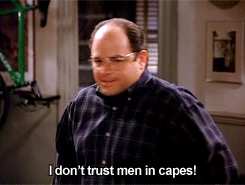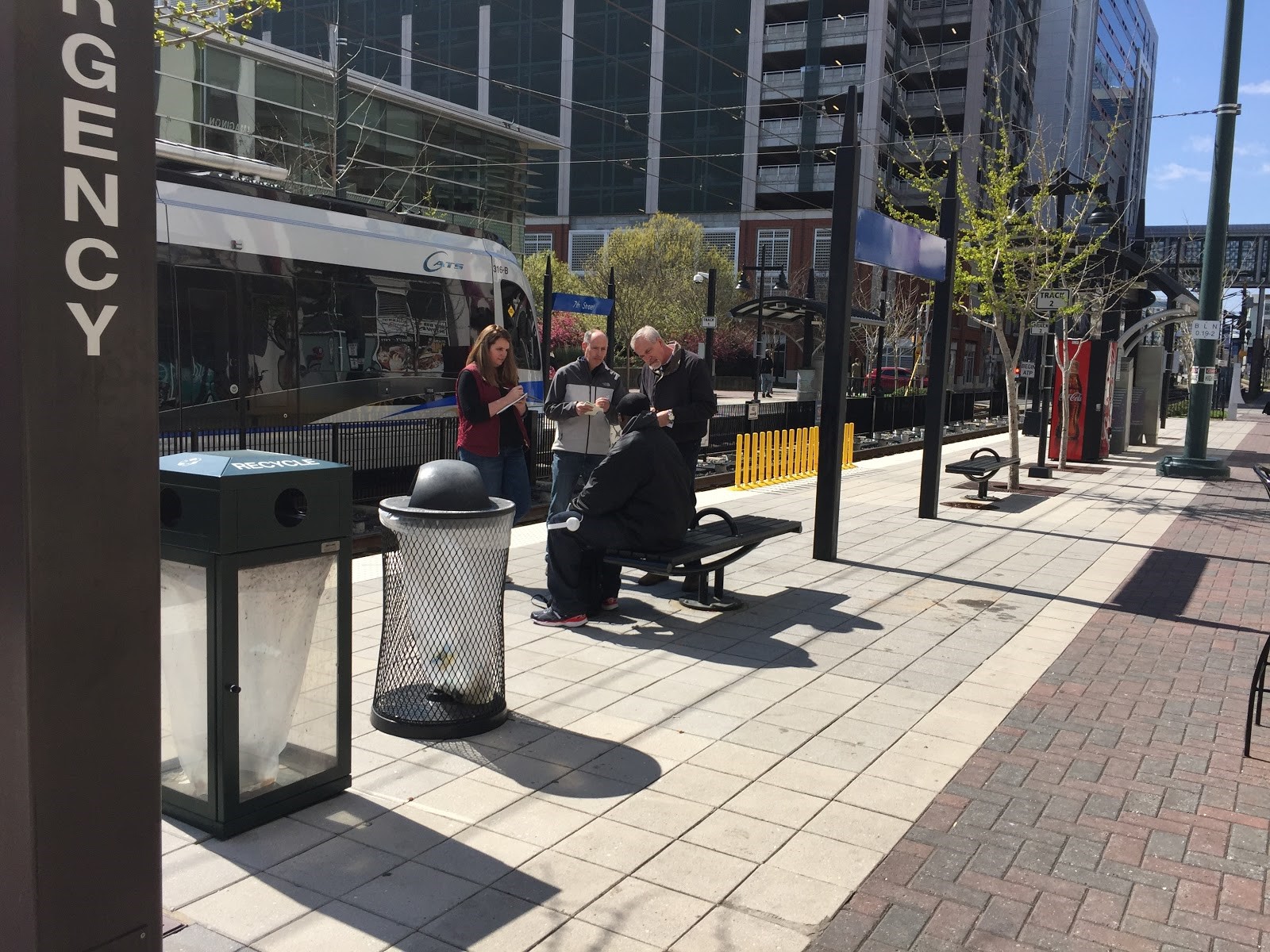How to learn if your robot will scare or delight people
The SaviOne robot delivers items to hotel guests. It was created in part using Design Sprints. (This photo is owned by Savioke, the firm that designed the SaviOne robot in the picture).
Confession: one of my pet peeves is poor elevator etiquette. If you’re waiting for an elevator, allow people to exit before you enter. Barging in like you own the place will get my blood boiling. You may think I’m ridiculous, and you could be right. But everyone’s got pet peeves, and at least I’m not on George Costanza’s level:
But this article isn’t about the greatest character in television history (fight me about it). Nor is it about my quirks. It’s about an encounter I had at a Las Vegas hotel. One that speaks to the usefulness of Design Sprints.
Meeting the King
After a long day’s work, I was eager to get to my room at the Renaissance Hotel in Las Vegas. I breezed through the hotel lobby and got to the elevator bank. I pushed the “up” button on the wall. The elevator arrived and the doors opened. What I saw inside shocked me.
Standing there, about three and a half feet tall, was Elvis. No, not an Elvis impersonator. A robot named Elvis. The robot had a digital interface that displayed the following text: “I am returning from a delivery.” I was so floored that I forgot to practice good elevator etiquette. As the King rolled forward I realized I was in “his” way. I moved aside and watched as the robot scooted around the corner, presumably to its home base.
Long live the King! (Photo credit: Heather Kelly, CNN)
Ever have one of those moments where the future is realized right before your eyes? This was my moment. I knew I’d live long enough to see robots interfacing with customers. I just didn’t know it would happen so soon, or at a hotel. I wanted to experience this first hand, so I ordered room service that night. You can imagine my disappointment when a human delivered it to me (don’t worry, I tipped him well).
I didn’t get the entire robot Elvis experience. But I did chat with a couple of guests to whom the King paid a visit. Like me, Elvis surprised them. After opening the door, their shock turned to intrigue and entertainment. The robot had all the items they requested. Its text and animations seemed to give it a personality. Elvis did its job and was entertaining, and the guests were satisfied with it.
Guest satisfaction like that doesn’t happen overnight—in this case, it was kicked into high gear in five days.
Sprinting into the future
Elvis was designed and delivered by a company called Savioke Labs with investment from (among others) Google Ventures, the venture capital arm of Alphabet, Inc. The Savioke story below is a shortened version of the full story you can read in the book Sprint by Jake Knapp of Google Ventures. We’re biased but we think it’s a great read.
As detailed in Sprint, the Savioke team had an idea for a delivery robot designed for hotels. They called this machine the Relay robot. The Relay could navigate elevators and deliver items like toothbrushes, razors, and snacks to guests. Savioke’s Founder and CEO Steve Cousins knew that hotels faced a persistent problem. During peak service periods in the morning and evening, hotel front desk staff get bogged down with requests for check-ins, check-outs, and room service. The Relay robot could keep guests satisfied by performing some tasks that front desk staff didn’t have time to complete.
The Starwood hotel chain agreed to work with Savioke on the Relay pilot program. One month before the Relay robot was scheduled to be in service at a Starwood hotel, the team of world-class engineers at Savioke was nervous. Their primary concern: how would guests react to the robot? Movies have given us androids with advanced personalities like C-3PO and WALL-E. Savioke’s robot wasn’t capable of nor designed to engage in conversation like his cinematic forefathers. Would guests be disappointed by this? Would it scare or confuse guests? How much personality should it really have?
Knapp explains in Sprint that to solve their problem, Savioke turned to Google Ventures’ team of designers. To prepare Elvis for its debut, the Google Ventures team led the Savioke team through a Design Sprint. Here’s what they accomplished in just five days:
They identified everything they knew about the challenge at hand. They honed in on the risks. They decided where to focus their effort (they chose the moment of delivery)
They sketched ideas (and ended up with 23 possible designs).
They decided which idea to prototype.
They built that prototype.
Finally, they tested the prototype with actual hotel customers.
It's called User Experience, not Youser Experience
Savioke had the technology, but they didn’t know what their customers wanted. Their biggest concern was how much personality they should give the robot—and what customers expected from it.
Instead of jumping to implementation, Savioke tested their ideas with customers. They gave their prototype robot a digital face and a soundtrack with beeps and whistles. When guests gave the robot a five-star review, it would do a little dance. Not overly aggressive, not underwhelming.
On the final day of the sprint, the Savioke team tested its prototype with real customers. They gathered actual hotel customers for an interview about their travel habits and hotel preferences. Customers were asked to call the front desk and ask for a toothbrush. A few minutes later, they received a knock on their hotel room door. The robot stood on the other end, ready to deliver the toothbrush. This was the moment of truth.
Savioke got the reaction it was looking for: customers loved the robot! Some even tried to order service a second time to see the robot again. In a matter of weeks, not months or years, the Savioke team answered a key question about how customers would react to their robot. Now they could move confidently forward to address other hurdles knowing that they had developed a technology and experience that people actually wanted and enjoyed.
Participants interview target customers during a service design training.
What would have happened if Savioke didn’t do Step 5 above? What if they had fallen in love with their own ideas and not tested how customers would react to it? How much time and cash would they have burned likely building the wrong thing? Thankfully, Savioke will never know. But our experience tells us that they very likely could have created something that turned hotel guests off. Not because they aren’t smart, capable people. But because the chances of getting something right the first try is near impossible.
This is why some version of enlightened trial and error is part of nearly every well known design process. Lean, UX/UI, human-centered design, design thinking, and design sprints all have some version of build, test, and learn at their core. It’s low-risk way to boldly explore unknown worlds without losing everything to dissatisfied customers. And when applied to the right type of challenge (big, with high stakes and not enough time), it works.
You can leverage smart design tools to tackle big challenges
Here’s the really good news: you don’t have to create robots to run a Design Sprint. You don’t need an investment by Google Ventures, either. All you need is a product to test, an idea to foster, or a challenge to solve. And the will to try something different.
Remember Olivia? Olivia isn’t a robot engineer or designer. But as a mid-level manager at a small consulting firm, she faces many of the same problems as other professionals. She gets handed big challenges she and no one in her organization has ever tackled. Yet when confronted with such a challenge, she successfully applies the tools and practices described above. She explored her challenge by talking to colleagues. She crafted an idea, built it, and tested it with her colleagues. Then, she put it in front of her client.
The engineering team at Savioke developed a robot that delivers goods. Olivia constructed a system to measure employee performance and establish merit compensation guidelines. Different goods and services, same build-test-learn process.
Want to see a Design Sprint in action? Check out our upcoming Design Sprint Bootcamp with Jake Knapp, the creator of Design Sprints and author of Sprint. Learn more about our Bootcamp at wearewily.com/training.
Cole Hoopingarner drives customer engagement at Wily, an agency that uses Design Sprints to help companies understand what their customers really want. Learn about Design Sprints at wearewily.com/design-sprints.




